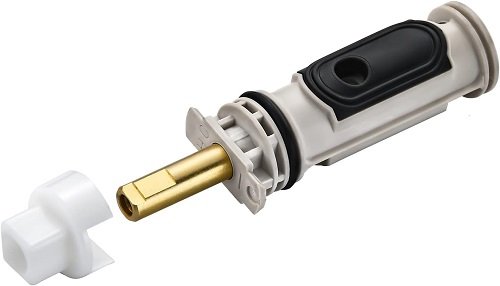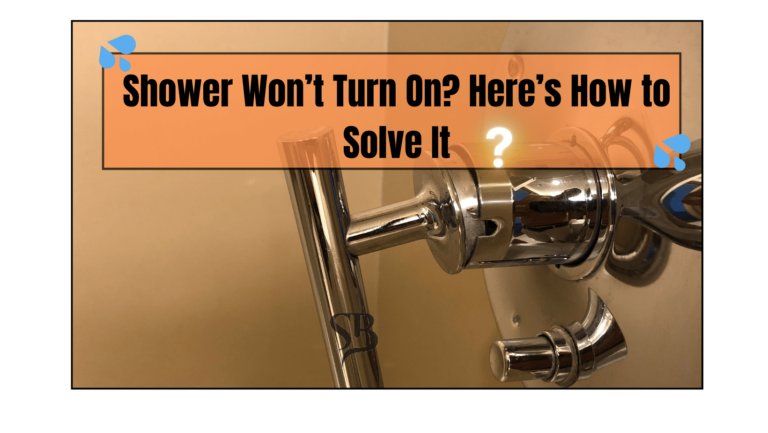“How To fix Shower knob That Fell Off? Find step-by-step instructions and expert advice to repair your shower handle efficiently in this informative guide.”
Your daily routine often begins with the comforting flow of water in the shower, making a functional shower knob a crucial part of your daily life.
But what do you do when you reach for that knob, and it suddenly falls off in your hand, disrupting your morning ritual? Don’t let this minor inconvenience dampen your spirits.
When your shower knob falls off, causing an unexpected hiccup in your daily routine, you can swiftly resolve this issue.
Start by assessing the extent of the damage and understanding why the knob fell off—often, it’s due to loose screws or worn-out components.
Next, gather the necessary tools such as a screwdriver and a replacement knob if needed. Carefully align the new knob with the valve stem and securely attach it using screws.
Finally, test the knob’s functionality by turning on the shower to ensure it controls the water flow and temperature as expected. Following these steps will quickly restore your shower knob, allowing you to resume your daily shower routine without any interruptions.
In this comprehensive guide, we will walk you through the process of fixing a shower knob that has fallen off, ensuring you can swiftly regain control over your shower and enjoy a seamless showering experience.
Understanding the Shower Knob Mechanism
Before we dive into the repairing process, let’s take a moment to understand how a shower knob operates.
The shower knob is a vital component of your shower system, allowing you to control the water flow and adjust the temperature to your liking. It typically consists of several essential parts, including the handle, screws, and the connection to the shower valve.
A loose or fallen shower knob can disrupt your daily routine and even lead to unexpected temperature changes or water wastage. Understanding how this mechanism works is the first step towards resolving the issue.

Assessing the Damage
When your shower knob falls off, the first course of action is to assess the extent of the damage. A fallen knob can be caused by various factors, including wear and tear, loose screws, or damaged components within the knob.
Begin by inspecting the shower knob and its connecting points for visible damage. Check the screws and their tightness, as loose screws are a common culprit. Sometimes, the issue may be as simple as a worn-out or damaged knob, while in other cases, it might involve deeper problems within the shower valve.
Understanding why the knob fell off is crucial in determining the appropriate fix. If the damage is minor, you can often repair it yourself. However, if the issue appears more complex or severe, it may be advisable to consult a professional plumber for a thorough assessment and repair.
Also Read: How To Paint Bathroom Cabinets
Tools and Materials Required
To successfully fix your shower knob, you’ll need a set of tools and materials. Having the right equipment at your disposal will make the repair process smoother and more efficient. Here’s a list to help you gather what you need:
Tools:
- Screwdriver (Phillips or flat-head, depending on the type of screws)
- Adjustable wrench (if necessary)
Materials:
- Replacement shower knob (if the old one is damaged beyond repair)
- Replacement screws (if needed)
Having these tools and materials readily available will save you time and ensure you can complete the repair effectively.
Also Read: Where To put Toilet Paper Holder In Small Bathroom
Step-by-Step Guide: How to Fix a Shower Knob that Fell Off
Now that you’ve assessed the damage and gathered your tools, let’s proceed with the step-by-step guide to fix your fallen shower knob:
1. Removing Any Remaining Parts of the Old Shower Knob
Start by ensuring that all remnants of the old shower knob are completely removed from the shower valve. Use your screwdriver to carefully unscrew and detach any remaining screws or pieces. Ensure that the valve stem is clean and free of any obstructions or debris.
2. Preparing the Shower Valve for the New Knob
Inspect the shower valve to ensure it’s clean and free from any dirt, grime, or residue that might hinder the attachment of the new knob. Use a cloth to wipe down the valve stem and surrounding areas, ensuring a clean surface for the new knob to adhere to.
3. Attaching and Securing the New Shower Knob
If you’ve obtained a replacement knob, it’s time to attach it securely to the valve stem. Carefully align the new knob with the valve stem and insert the provided screws through the designated holes in the knob. Use your screwdriver to tighten the screws securely.
Ensure that the new knob is firmly in place and doesn’t wobble. A snug and secure fit is essential to prevent future issues.

4. Testing the Shower Knob to Ensure Proper Functionality
With the new knob securely attached, it’s time to put it to the test. Turn on the shower to check if the water flow can be controlled as expected and if you can adjust the temperature without any issues.
Test the knob through its full range of motion to ensure it operates smoothly and effectively. Address any irregularities or concerns immediately to avoid potential problems down the line.
Alternative Solutions for Shower Knob Repair
In some situations, you might require a quick and temporary fix to ensure you can still use your shower while you gather the necessary replacement parts or tools. Here are a few alternative solutions you can explore:
A. Quick-Fix Solutions for a Temporary Knob Repair
Tape or Adhesive: If the fallen knob has a flat surface, you can temporarily attach it to the valve stem using strong tape or adhesive. Ensure that the adhesive is waterproof and can withstand the moisture in the shower.
Rubber Band: Loop a durable rubber band around the valve stem and the knob to hold it in place temporarily. This makeshift solution can provide a quick fix until you can perform a more permanent repair.
B. Exploring DIY Options Using Household Items
Paperclip: If the issue is primarily with the screws, you can use a paperclip as a makeshift screw. Straighten the paperclip and insert it into the holes where the screws would go, securing the knob temporarily.
Zip Tie: A zip tie can be used to secure the knob to the valve stem temporarily. Thread the zip tie through the holes in the knob and tighten it securely.
C. When to Consider Professional Assistance for a More Permanent Solution
If you’re uncomfortable with DIY fixes or the damage appears significant, it’s advisable to seek the assistance of a professional plumber. They have the expertise to accurately diagnose the issue and provide a more permanent and reliable solution. A professional repair ensures that the problem is effectively addressed, minimizing the chances of future complications.
Preventing Future Shower Knob Issues
Now that you’ve successfully fixed your shower knob, it’s important to implement preventive measures to avoid similar issues in the future. Here are some tips to help you maintain a functional shower knob:
Also Read: How To Change An Adult Diaper
A. Proper Maintenance Techniques to Ensure the Longevity of the Shower Knob
- Regular Cleaning: Incorporate regular cleaning of the shower knob into your maintenance routine. Use a mild cleaning solution and a soft cloth to wipe down the knob and the surrounding areas. This prevents the buildup of dirt and grime that can affect the knob’s functionality.
- Tighten Screws Periodically: Check the screws and bolts that hold the knob in place regularly. Over time, these may loosen due to the constant usage of the knob. If you notice any screws becoming loose, tighten them immediately to ensure a secure fit.

B. Tips on How to Handle the Shower Knob to Avoid Damage
- Gentle Handling: Handle the shower knob with care. Avoid turning it too forcefully or with excessive pressure, as this can damage the internal components. Use gentle, smooth motions to adjust the water flow and temperature.
- Avoid Hanging Items on the Knob: Avoid using the shower knob as a hook to hang towels, robes, or other items. Hanging heavy items on the knob can cause stress on the components and may lead to the knob loosening or falling off.
C. Regular Checks to Identify Any Early Signs of Knob Wear or Damage
Monthly Inspections: Set a reminder to inspect the shower knob and its components at least once a month. Look for any signs of wear, rust, or looseness. Catching these issues early allows you to address them promptly and prevent more significant problems in the future.
Conclusion
Congratulations! You’ve successfully fixed your shower knob and ensured a smooth and reliable showering experience.
Remember, regular maintenance and gentle handling are key to preventing future issues. By following the steps outlined in this guide and adopting proper maintenance habits, you’ll enjoy a functional and worry-free shower for years to come. Happy showering!







